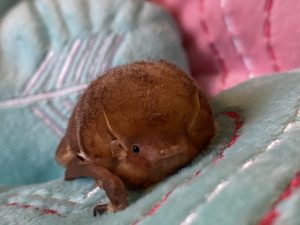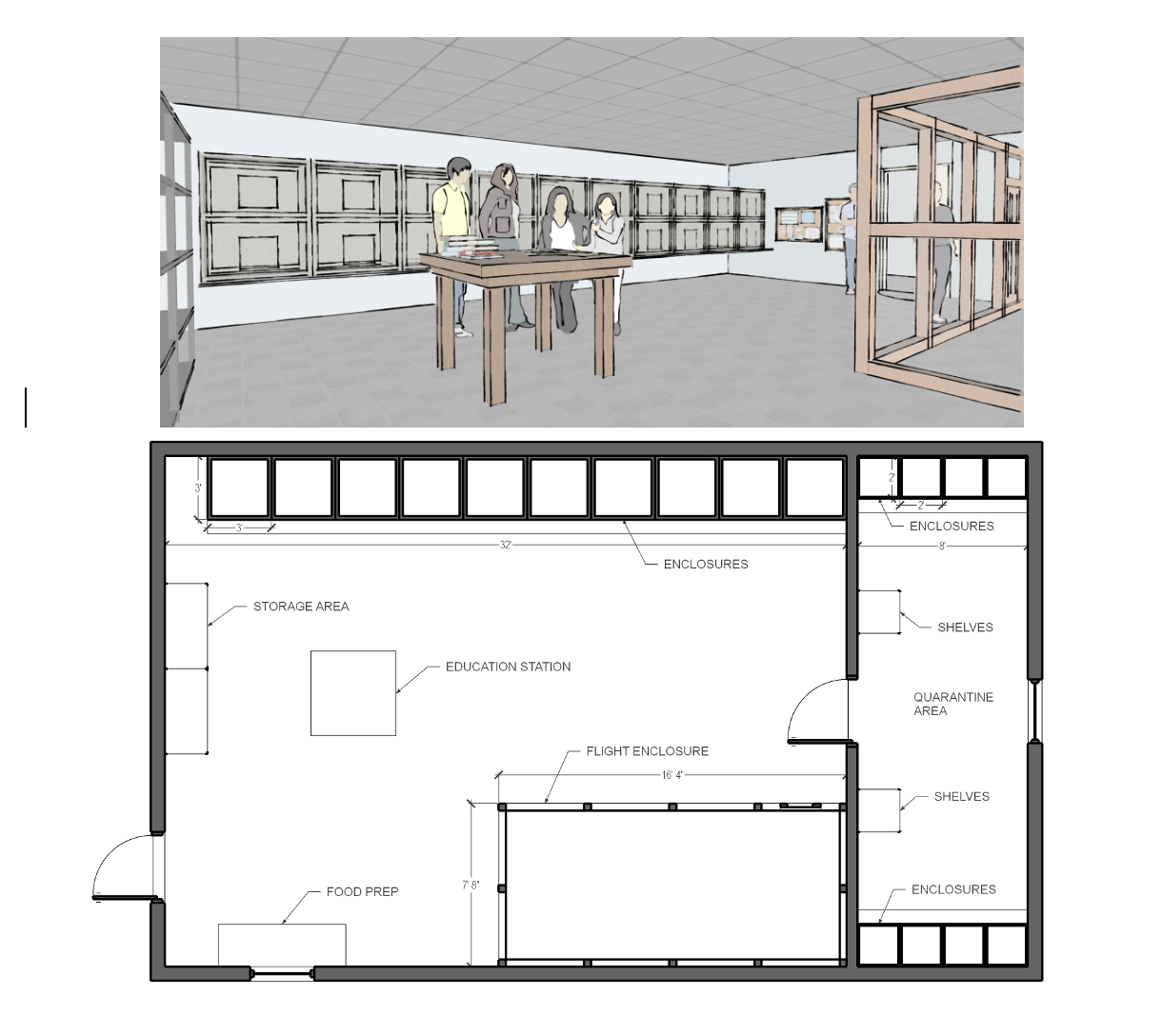Make a Donation
Help build Kentucky’s First & Only Bat Conservation Building!
 Why Bats?
Why Bats?
Bats in our ecosystem:
Bats play a crucial role in our environment for several reasons:
- Pest Control: Bats are voracious insect eaters, helping to control populations of agricultural pests like moths and beetles, reducing the need for chemical pesticides.
- Human physical health: Mosquitoes carry marry deadly diseases such as West Nile virus, malaria, yellow fever, and dengue fever. By the vast number of mosquitoes eaten by bats, they help protect our health. These diseases are increasing in number in the United States due to Climate Change.
- Pollination: Some bat species, such as fruit bats, are important pollinators for various plants, including agave, bananas, and mangoes,
contributing to biodiversity and fruit production. - Seed Dispersal: Bats aid in forest regeneration by dispersing seeds through their droppings, helping to maintain healthy ecosystems.
- Guano Fertilizer: Bat guano (droppings) is a valuable natural fertilizer rich in nutrients, benefiting soil quality and plant growth.
- Ecological Balance: Bats are an integral part of food chains and ecosystems, supporting the survival of other species and maintaining ecological balance.
These ecological services underscore the importance of bats in sustaining our environment.
Threats bats face:
Bat species face various threats in the modern world. One significant challenge is habitat loss due to urbanization, deforestation, and agricultural expansion. As natural habitats diminish, bats lose roosting sites and access to food sources, impacting their populations.
Another critical concern is the spread of diseases, particularly white-nose syndrome (WNS). This fungal disease has led to alarming declines in bat populations, affecting hibernating species. WNS disturbs bats during hibernation, causing them to use precious energy reserves and often leading to mortality. Many die from starvation. The fatality rate of some species once WNS enters a hibernaculum is 78-99%!
Pesticide use in agriculture poses a threat as well. Bats, being insectivores, may consume insects that have been exposed to pesticides, leading to indirect poisoning. This can have detrimental effects on bat health and reproduction.
Climate change further compounds these challenges. Altered weather patterns and temperature shifts can disrupt the availability of insects, a primary food source for many bat species. Additionally, extreme weather events, linked to climate change, can impact roosting sites and foraging areas.
Wind energy development is a more recent concern. Wind turbines, while considered a green energy source, can pose a threat to bats through collisions with the turbine blades. This is especially problematic during migration or when bats are attracted to insects near the turbines. An estimated 10,000-100,000 of bats are killed each year!
Conservation efforts are crucial to mitigate these threats. Protecting natural habitats, implementing sustainable agricultural practices, monitoring and managing diseases (part of what we do), rehabilitation of sick or injured bats, and developing bat-friendly wind energy solutions are essential steps to ensure the survival of bat species in the face of these challenges.
What we do:
When people find an injured, sick, or displaced bat, they call us. We will determine if the bat needs a captive setting or if the caller just needs humane advise on a situation. If the bat(s) come to us, we rehabilitate them with the goal of release. Every single bat that we can return to the wild will make a positive impact on our environment. Bats are the single most important species that we rehabilitate. We take care of all species, adults and pups, including those on the federally endangered species list.
We have had top-notch training from leading bat experts across the United States. We continue to seek professional development regarding any new protocols to help our efforts. Smaller rehabilitation centers and individual rehabilitators look to us for regular assistance.
We are members of the Kentucky Bat Working Group and Southeast Bat Working Group. We regularly participate in conferences and annual bat counts around the state. This helps to be in the field to gage health and bat numbers as well as connect us with biologists and environmental consulting firms across the region. We serve as a resource to these people as well as Kentucky Fish and Wildlife and Federal Fish and Wildlife.
Why a new building:
With a separate building for bat rehabilitation, we can increase our capacity to save more bats. We will be able to partner with our local Animal Services so they can send all of their bats to us versus euthanizing on the spot. Incidentally, the room that we are using currently for bats, would open up for other species of wildlife in need.
In this building, not only will we have adequate space, but we will have a much better (and needed!) quarantine area, feeding station, controlled temperature and humidity levels, a practice flight area, and areas specifically designed for licensed permanent residents. Additionally, this building will serve as a viewing area for educational purposes. This will benefit research students, college interns, biologists, and small public groups
Currently, we house bats in one 12 x 12 small room. There is not a separate quarantine space which is not ideal. In order to continue to be a leader and the best resource we can for both humans and bats, we simply have to the means to do that. Despite the excellent care that we give bats, we are limited in our ability due to building restrictions.
We do have a reputable builder ready to begin work after finances are secured. We have a designated spot on our 23 acre property waiting for good things to happen! We are very excited about this building and the important work that we will be able to do in it.
How you can help:
You can play a part in Kentucky’s first dedicated Bat Rehabilitation building. Please contact Brittany or Brigette to see how you can make a big impact. There will be naming opportunities for this building.
For contributions, we have many options to donate on our “Donate” page under our “Get Involved” tab. Thank you in advance! Brittany@SecondChancesWildlife.org , Brigette@SecondChancesWildlife.org
